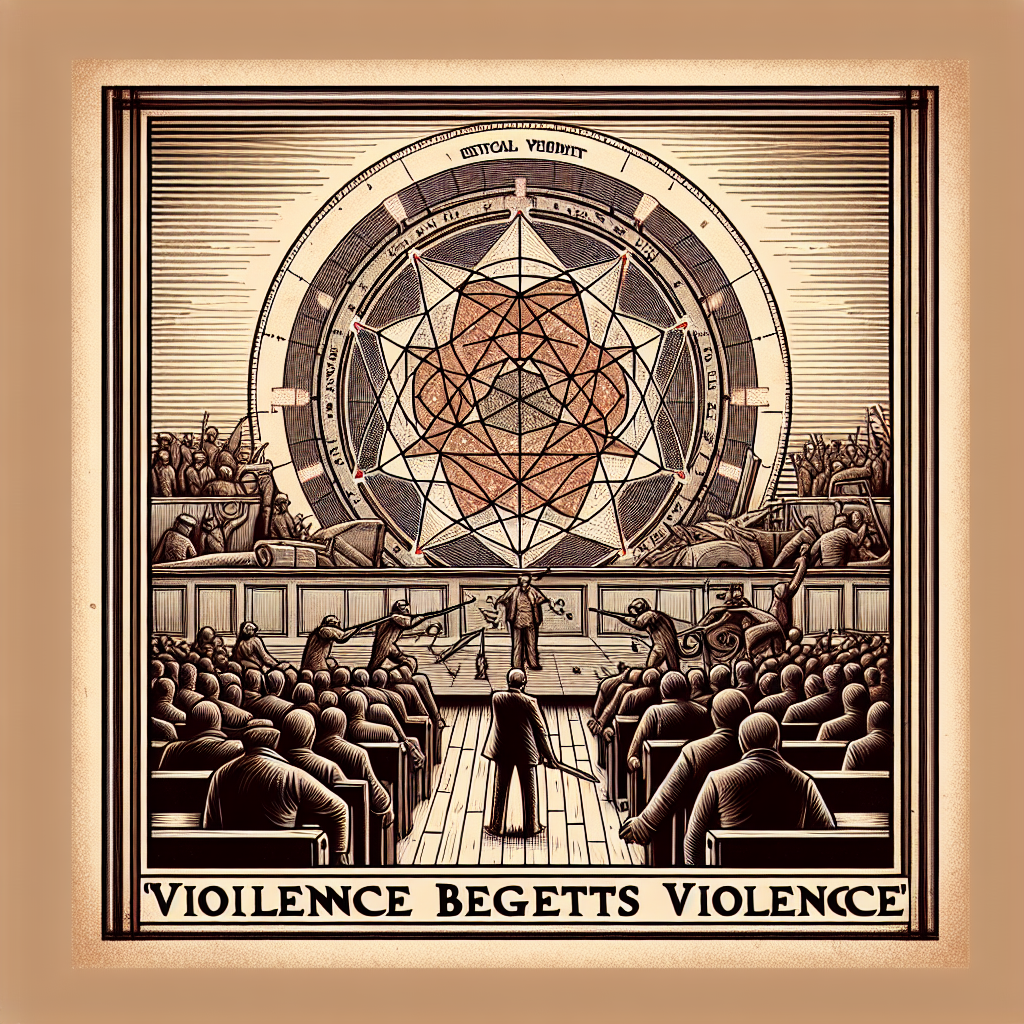Imagine a world where anger and hurt don't just fade away but instead grow stronger with each punch thrown and every word hurled. That's the reality we face when understanding the phrase 'violence begets violence.' It's an age-old concept and sadly, it rings as true today as it ever has. From the schoolyard scrapes that take place across the globe to the geopolitical conflicts that catch the world's eye, violence has a sneaky way of perpetuating itself.
Let's break it down: whenever someone acts out in violence, it typically comes from a place of pain or fear. It's a reaction to having been violated, disrespected, or attacked. When this occurs, it fosters a cycle of retaliation. People who've been hurt feel they must hurt back in order to gain a sense of justice or to regain control. This is seen not just in individuals but also in communities and entire nations. Take, for example, the long-standing feuds between countries that can span decades due, in part, to retaliation themes.
Violence doesn't just happen in a void, and it rarely goes unanswered. Once one side throws the first punch, it's like setting off a chain reaction. It often leads to a back-and-forth struggle, each party feeling validated in their violent responses by what they interpret as the need to protect themselves or their communities. Surveys examining inner-city violence and studies on international conflict show a strikingly consistent pattern: violence tends to lead to more violence. Every act of violence creates ripples that echo through generations, displaying itself in what is often referred to as the cycle of violence.
Consider abusive household situations—a child who grows up in a violent home is more likely to develop violent behavior later in life. This isn’t just about physical actions but also about learning that violence is an acceptable or even expected response to conflict. Those who have experienced or witnessed abuse or violence may struggle with what is termed as 'trauma re-enactment,' a theory which explains why abused individuals sometimes become abusers themselves. Mental health professionals point out the importance of breaking this cycle by introducing healthy coping mechanisms instead.
Yet despite these understandings, some argue that violence is a necessary evil at times. From a self-defense perspective, there are instances when using force could prevent further harm. For instance, fighting back might be necessary if someone is physically attacked. Self-defense laws across many countries acknowledge this fact, but they also tread a fine line, emphasizing that violence should be used only as a last resort.
The political world also grapples with these issues. When states consider military action, the theory goes that violence can ultimately bring about peace. Leaders often justify military force by asserting that a show of strength is necessary to discourage further aggression or to protect citizens. This viewpoint is hotly debated. While military intervention may stop immediate threats, it sometimes sows seeds for future conflict. Historical analysis of wars from the past century illustrates that occupations and retaliations often create enduring animosities and new waves of violence.
So how do we disrupt this seemingly endless cycle? Building peace is not about turning a blind eye to injustice or aggression. It involves addressing the underlying causes. Fighting against systemic issues such as poverty, inequality, and lack of access to education can significantly reduce the drivers of violence. Community programs that encourage dialogue, teach conflict resolution skills, and provide support and resources to at-risk populations are essential.
In many places, youth programs aimed at steering young people away from gangs and violence use approaches that address both the internal and external causes of violence. By promoting empathy and providing opportunities for constructive action, these initiatives offer a lifeline to those caught in cycles of aggression. Additionally, mental health support plays a crucial role, enabling individuals to process trauma and break free from destructive patterns.
When discussing this, we shouldn’t forget about empathy, one of humanity's most powerful tools. By understanding the story behind every instance of violence, we can approach situations with a bit more compassion and a lot more awareness. While empathy itself doesn’t directly stop violence, it aids in understanding and helps us work towards prevention.
In the end, recognizing that violence begets violence is the first step toward creating a more peaceful world. It's an acknowledgment of a profound issue that requires a comprehensive societal effort to overcome. Our collective actions, policies, and mindsets can tip the balance towards breaking rather than perpetuating this cycle. Whether it's speaking out against bullying, advocating for peaceful conflict resolution, or supporting those who have been trapped in violence, we each have a role to play.

